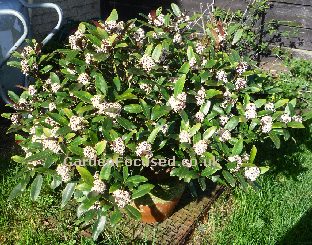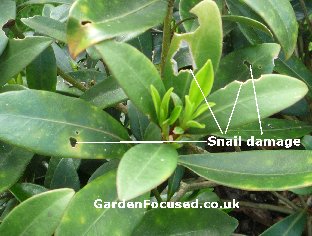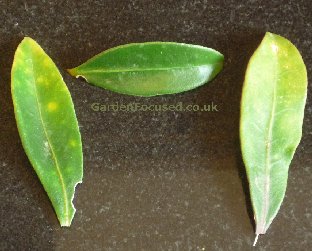HOW TO GROW SKIMMIA
Article by DavidMarks
Skimmias are evergreen shrubs growing to about 1m (3ft) high androughly the same spread. They originate from Japan, China and spread West tothe lower parts of the Himalayas. They are grown for their foliage and wheremale and female plants are present, for the female plant’s berries. Idealfor small gardens, containers and gardeners who sometimes neglect their plants.
Use the checklist below to decide if a Skimmia is suited to your garden conditions.
- They need semi-shade throughout the year and will tolerate full shadewell. In very low light conditions the plant may become leggy. Theirnatural habitat is in forests and woods where low light levels arecommon. if they are grown in full sun the leaves will burn very easily.
- Grow equally well in open ground and containers to an eventual sizeof 1m (3ft) height and spread.
- Can be grown as a low hedge when planted about 45cm / 18in apart.
- They have a definite preference for slightly acidic soil althoughthey can grow well in neutral soil with a little help. They do not growwell in alkaline soils. See
here for more information on acid and alkaline soil. - Tolerate periods of drought especially when grown in the openground. Their leaves are leathery and retain moisture well.
- Tolerate neglect well mainly because their nutrient requirementare low and they grow well with no pruning.
- They produce attractive flower buds from November and these open outinto flowers March / April.
- If male and female Skimmias are planted together the females canproduce attractive red berries in May to June. Male varieties will not produceberries.
- All parts of Skimmia, including the berries, can cause discomfort if eaten.
DIFFERENT VARIETIES OF SKIMMIA
The most commonly found variety of Skimmia in the UK (and around the world) isSkimmia japonica. This is strong growing and probably the hardiest of allthe varieties. It produces flower buds and flowers freely and it isdifficult to see why you would choose any other variety. Because it is socommonly grown it is also the cheapest to buy in garden centres, online and in other shops.
There are three cultivars (types) of Skimmia japonica readily available in the UK andthese are:
Skimmia japonica ‘Rubella’ – totally evergreen, strong growing and healthy. The leaves are deep green, leathery. In late winter it produces purple red flower buds freely which look good. In March / April the buds open up and cover the plant in masses of tiny white flowers. This plant is male.
Readily available to buy online from the GardenFocused recommended supplier,
click here to buy this Skimmia now.
Skimmia japonica ‘Fragrans’ – the same as Rubella above but the flower buds are a light pink / green and the flowers are white and cream. This plant is also male.
Skimmia japonica ‘Nymans’ – the same as Rubella above but the flowers are not quite as prolific. This is a female variety though and will produce red berries in autumn if fertilised by a nearby male variety. Readily available to buy online from the GardenFocused recommended supplier, click here if you want to buy Skimmia japonica ‘Nymans’ now.

A Skimmia japonica in flower (click to enlarge)
There are other Skimmias and the two most common are listed below:
Skimmia confusa (‘Kew Green’) – the same as Rubellaabove but the buds are lime green and the flowers more yellow. I’m neversure why this variety would be bought in preference to any of the aboveother than it’s different. The others are more colourful and strong growing.
Click here if you want to buy Skimmia confusa Kew Green online now.
Skimmia reevesiana – different from all those abovebecause this variety is hermaphrodite and produces berries withoutfertilisation from nearby male plants. The flowers are white and appear allover the plant in March / April. Red berries appear in late autumn and lastfor several months.
Click here if you want to buy Skimmiareevesiana online now.
HOW TO CARE FOR A SKIMMIA
All Skimmias require the same care and luckily enough that is veryminimal. These are plants which can stand a good degree of neglect althoughof course they do of the very best when treated correctly.
Skimmias can be grown equally well in pots or in the open ground.
Skimmia do best on a slightly acid soil. Before adding anything to the ground you need to know if your soil is acidic,neutral or alkaline. The best way to do this is to buy a soil testing kit onlineor from your local garden centre.
Alkaline or neutral ground can changed to be more acidic by adding sulphur.The finer the sulphur the quicker it will act, Flowers of Sulphur is a common name for very fine sulphur and isavaialable online or from most garden centres.
If your soil is alkaline I would recommend digging the soil to 30cm / 1 foot deep and addinghalf the recommended dose to the dug soil. Dig it in well, plant your skimmia and scatter the remaining halfaround the plant.
If your soil is neutral, just add the recommended dose to the soil surface and work it in gently with a trowel.Don’t go overboard with the sulphur, it’s easy to make the ground too acidic. Leave it a year and then add more nextyear if the skimmia shows signs of leaves yellowing.
You can add ericaceous compost instead although it’s now believed that sulphur is best when planting skimmia inopen ground.
Choose a position which is in semi-shade for all of the year, fullshade is also fine as long as natural light reaches the plant. North facinggarden situations are ideal for Skimmias, and not many other shrubs do wellin these conditions.
If planted in reasonably good garden soil then that’s it for yourSkimmia, it will be more than happy to look after itself without anypruning, feeding or other care – truly a delightful shrub for the lazygardener! They will last for around 20 years.
GROWING SKIMMIAS IN CONTAINERS
When planting a Skimmia in a container it’s best to remember that the plant caneasily last for twelve years and twenty years is a real possibility. With thatin mind choose a good container which will look good for all that time andalso frost hardy.
Our choice would be a plain terracotta pot because the colour contrasts with thefoliage well. After a couple of years the pot will age with lichen and othergreen / brown marks and that looks fantastic, a real cottage garden appearance.
Plant in pots full of ericaceous compost for the correctsoil acidity. Feed in March and August with an ericaceous plant food andwater when conditions are dry. This will be more frequently needed from Juneto early September.
Rainwater is preferable over tap water as far as Skimmias are concerned. Tap water is often too alkaline and slightly acid water is preferable. Water from a water butt is the ideal solution for almost all container grown plants. Prune lightly after flowering tomaintain shape and size.
Skimmia are fully frost hardy and survive harshwinters even when grown in containers. For safety though we move ourcontainer grown Skimmia next to the house from November to the end ofFebruary. This provides some protection from harsh winds and the houseprotects your plant from the worst of the deep frosts. Our plant has beengrowing for eight years in the Midlands very successfully with no moreattention than that described above.
SKIMMIA PESTS AND DISEASES
Skimmias are very healthy plants and
rarely suffer from pests or diseases. One pest which does occasionally occuris the spider mite. In truth, a healthy Skimmia will not be badly affectedby these pests and they are best ignored. If you notice them on the leavesthen a strong spray with insecticidal soap will clear most of them.
YELLOWING LEAVES ON SKIMMIA
One common complaint with Skimmias, discussed briefly above, is yellowing of leaves. Seethe picture below for a good example.
If you click the above picture it will enlarge and you can see that themiddle leaf looks healthy whereas the two other leaves have yellow marks onthem. In most cases this is caused by the plant not being able toabsorb nutrients because the soil is too alkaline. The solution is to top upwith ericaceous compost and feed with plant food for acid loving plants. Theodd used tea bag worked onto the soil surface also does wonders to turn soilslightly more acidic.
If you know your Skimmia is growing in acidic soil but the leaves arestill yellow the next possibility is a magnesium deficiency.This can affect a wide variety of plants and Skimmias are no exception. Thesolution is simple, add the correct amount of Epsom Salts to the groundsurrounding the plant. You should notice a difference after a couple ofmonths especially on new foliage.
A quick search on your favourite search engine (“Epsom salts and plants”)will come up with several products for gardeners to counter a magnesiumdeficiency. Just make sure you buy one for plants because it is also usedfor horses and the dosage rate will be very different! Follow the instructionson the pack and don’t over applyEpsom salts, too much can also cause problems.
The final cause of yellowing Skimmia leaves is too much sun. Skimmias prefer part shade conditions, full sun all day especially in warmer areas is not their preferred situation. With container grown Skimmias, the solution is easy, move the container to a more shaded position.
If the plant is growing in a border the only solution is to dig it up and move it. Skimmias are tough plants and can be moved with a high chance of success. The best time to move it is in late autumn but before the frosts arrive. If the plant is too big to move, prune it in spring and then move it in autumn, don’t prune it in autumn.
Snails often enjoy munching on the leaves of Skimmia andafter a wet spring they can do significant damage. They prefer the olderleaves for some reason and the picture below shows this clearly.

Significant damage caused by snails
The easiest solution to snail damage is either to regularly pick them off orscatter slug pellets around the area. For more information on snails see our
page dedicated to this pest.
SKIMMIA SUMMARY
Below we list the key strengths and weaknesses of Skimmias.
| HARDY | |
| CLAY SOIL | No |
| SANDY SOIL | Yes |
| DRY SOIL | No |
| SHADE | Yes |
| EVERGREEN | Yes |
| EASY CARE | |
| SMALL GARDENS | Yes |
| POT / CONTAINER | Yes |
| FLOWERING | |
| FLOWER TIME | March to May |
Other “easy-care” shrubs and perennials in this series include
Choisya, Hebes, Hellebore, Mock Orange, Lilacs,
Potentilla and
Rose of Sharon (hibiscus syriacus). Click the link below for the full list of our shrub care guides.
Sometimes our readers ask specific questions which are not covered in the main article above.Our new
Skimmia comment / question and answer page
lists their comments, questions and answers. At the end of that page there is also a form for you to submit any new question or comment you have.

